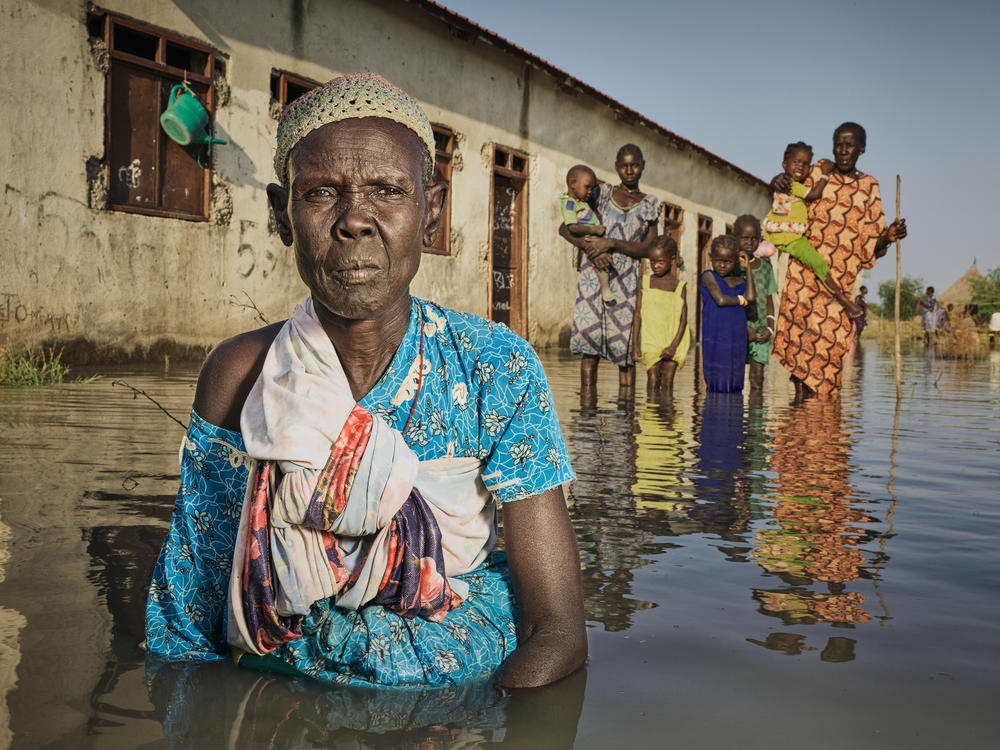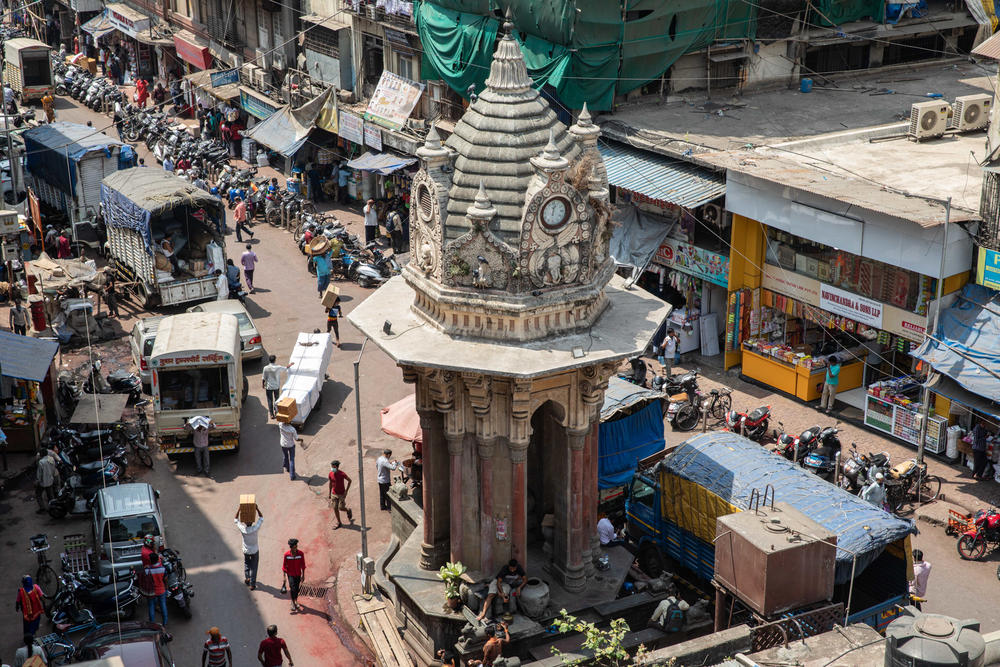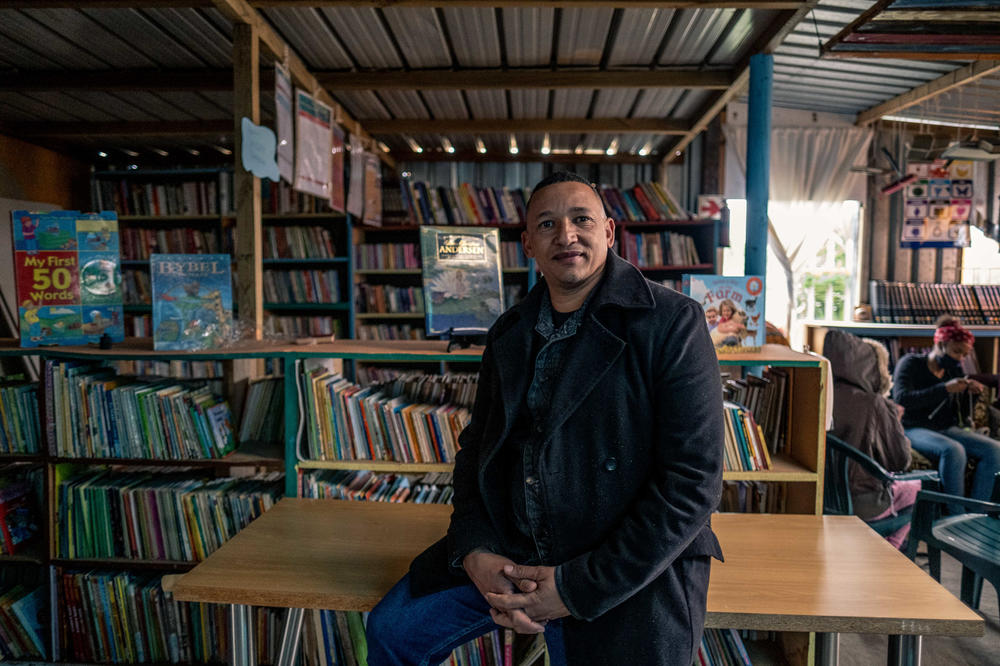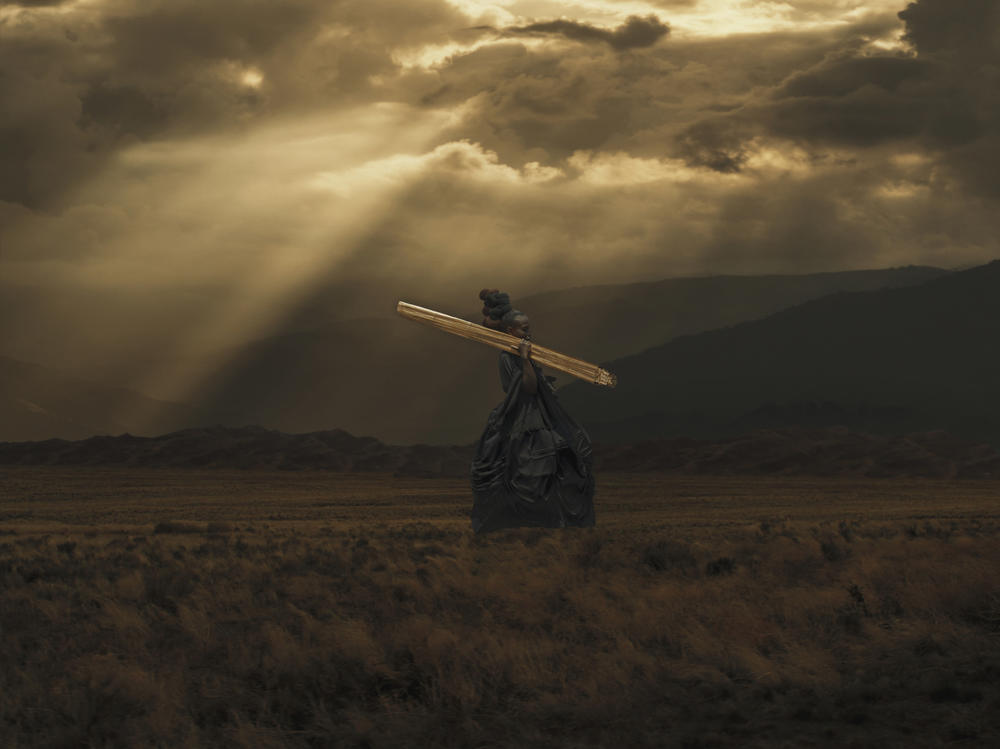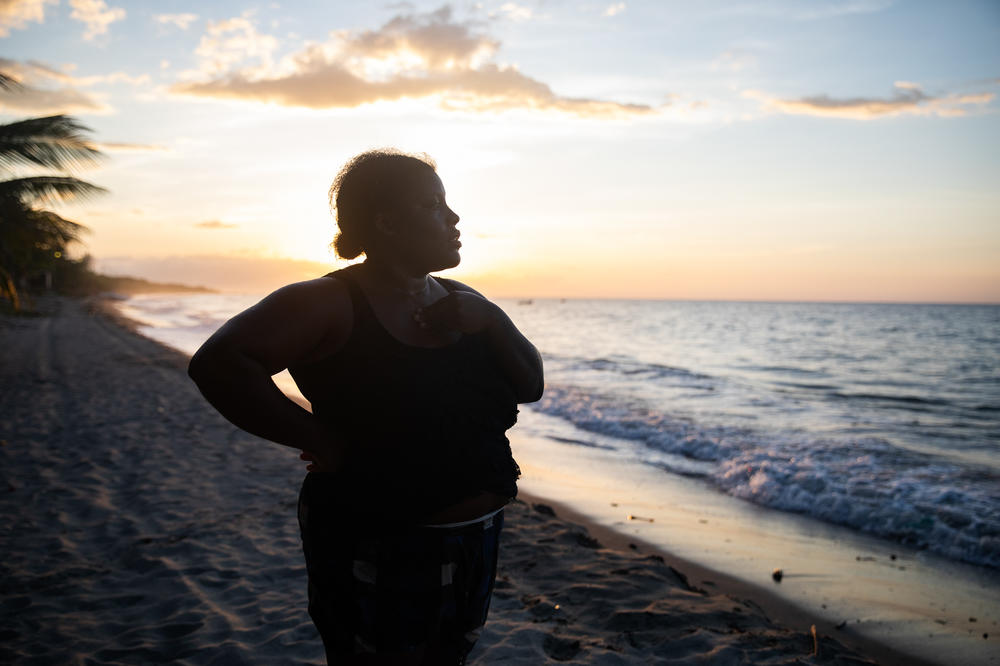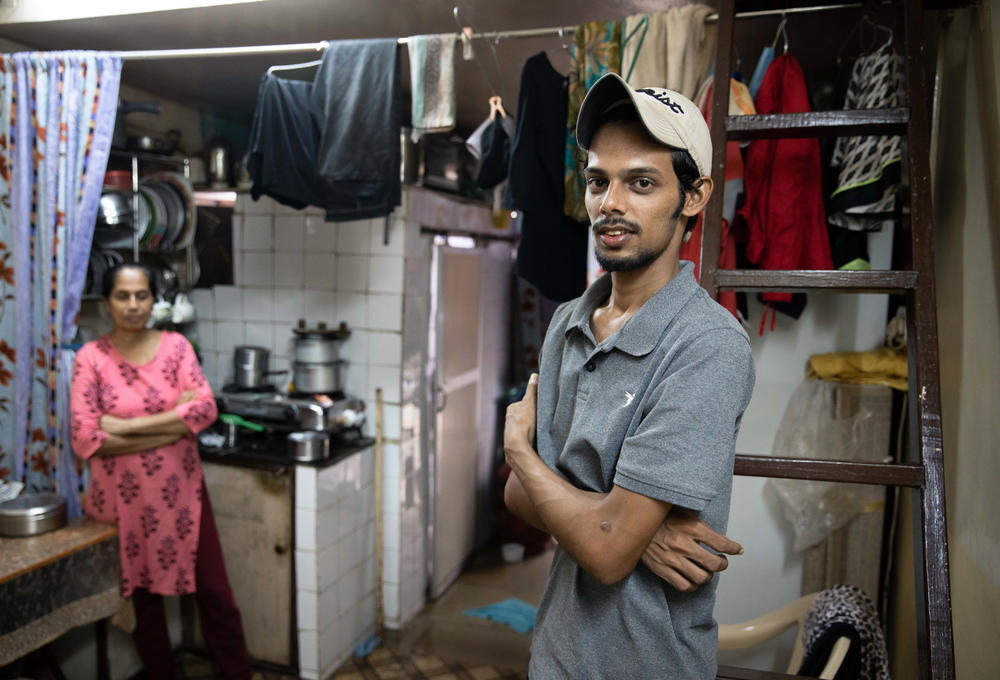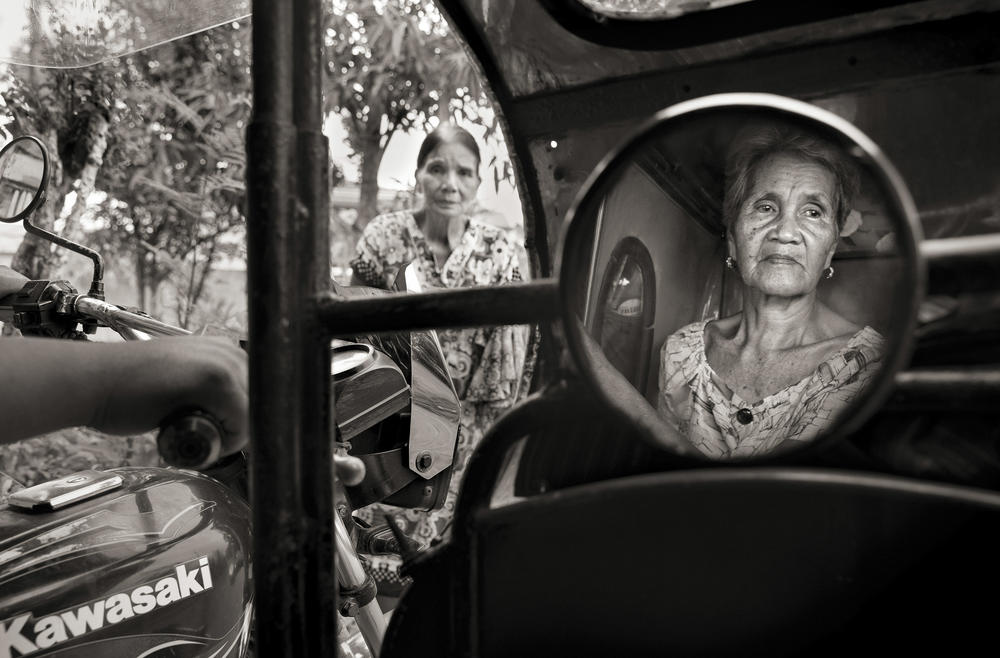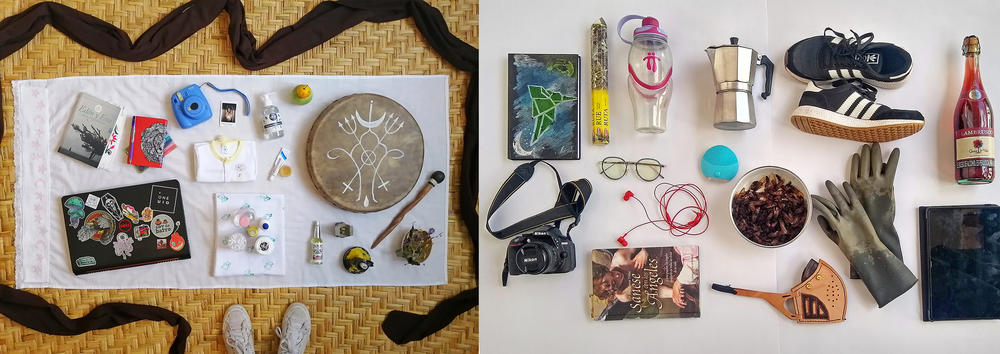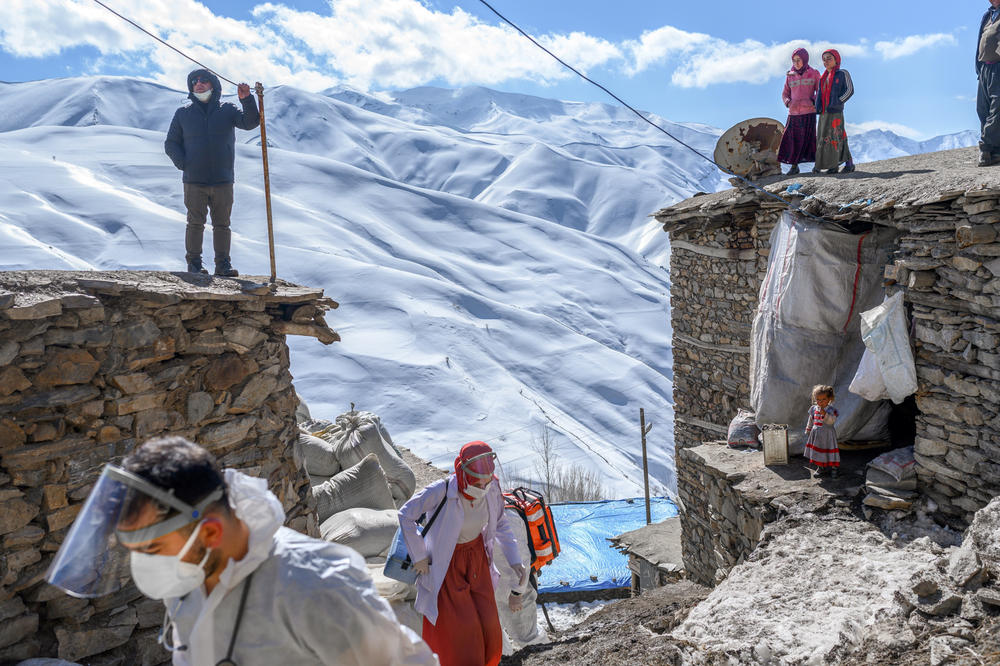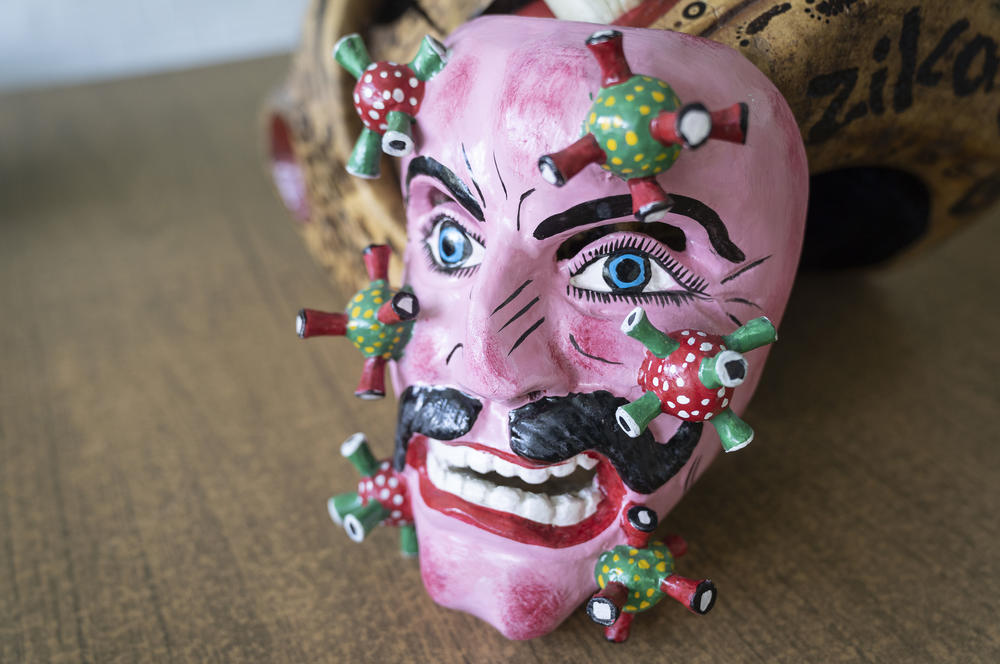Section Branding
Header Content
Flood survivors, former sex slaves, fantastic masks: Top global photo stories of 2021
Primary Content
This year, Goats and Soda published a number of photo essays from photographers and artists from around the globe.
One story gives a human face to the problem we've all heard about: food insecurity in the pandemic, from the Philippines to Tennessee. Readers were so moved they wrote in asking to make donations to the people we profiled. Another tells the story of a library aimed at kids that was started in two shipping containers in a violence-torn neighborhood in South Africa. Yet another shows the 15 things folks can't live without in a pandemic, from ants to holy water.
Here is a selection of our favorite global photo stories of 2021.
Prize-winning photos capture the grit and suffering of flood survivors in South Sudan
The photo series Unyielding Floods recently won its fifth award. It captures the strength and hardship of those affected by flooding of biblical proportions in South Sudan. Published Nov. 20, 2021
Mumbai falls in love with its forgotten fountains all over again
They're majestic. They're neglected. And now they're slowly being fixed up. Conservationists are preserving them — and officials hope the fountains will supply free water for the city's impoverished. Published April 11, 2021
The Hot-Spot Library was born in two shipping containers in a Cape Town slum
It started with a guy who had a dream — bringing books to kids in a neighborhood torn apart by drug abuse and gang violence. It's the Hot-Spot Library of Cape Town, South Africa. Published June 27, 2021
Why a Zimbabwean photographer asked her subjects to pose in Victorian garb
African Victorian, a series of unconventional portraits by Zimbabwean photographer Tamary Kudita, combines Victorian fashion with her country's culture to examine the impact of the colonial era. Published May 31, 2021
The pandemic sends a single mom in the big city to a simpler, happier life
Ella Guity lived in the capital of Honduras with her daughters and mother. COVID-19 was surging. She sent them all to the fishing village where she grew up. Could she — should she — go too? Published Jan. 30, 2021
The new faces of pandemic food insecurity: hungry, worried ... yet generous
A lawyer who lost her job. A single mom with HIV. A grandmother who thought she had enough money to get by. A onetime golf coach. They're among the millions now struggling to put meals on the table. Published Sept. 17, 2021
Former sex slaves from WWII still fight for justice in the Philippines
Soldiers in the Japanese army systematically raped women in the Philippines. What's become of the aging survivors of this wartime atrocity in the midst of the pandemic? Published Sept. 24, 2021
15 things folks can't live without in a pandemic, from ants to holy water
An anthropologist put out a call: Take a photo of 15 essential items that help you cope. She heard from 1,000-plus people in 50 countries. There's a lot of laptops — as well as wonderful surprises. Published July 2, 2021
Vaccine history repeats itself — sometimes
From the first vaccine (for smallpox) the questions have been the same. How do we transport it? Who's next to get it? Why so much hesitancy? The answers can be similar — or dramatically different. Published May 14, 2021
Mexican masks portray COVID as a tiger, a devil, a blue-eyed man
Two professors invited Indigenous artisans to make masks portraying the agent of the pandemic — the coronavirus — through the lens of their cultural traditions. Published Aug. 28, 2021
Copyright 2022 NPR. To see more, visit https://www.npr.org.
Bottom Content

